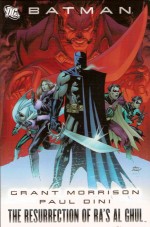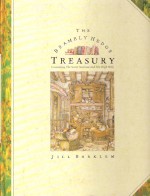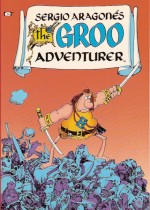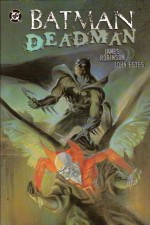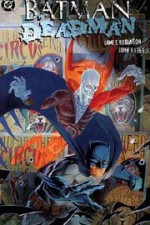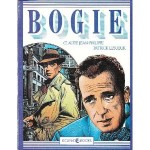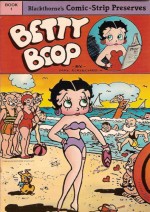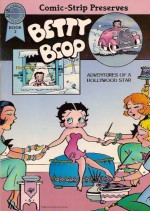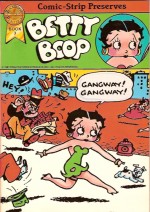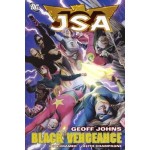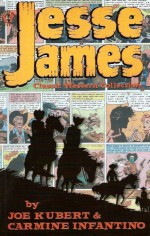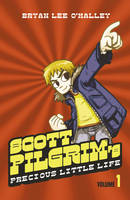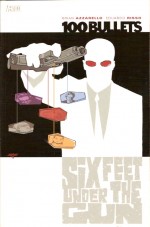
By Brian Azzarello & Eduardo Risso (Vertigo)
ISBN: 978-1-84023-662-0
Beginning as one of the best crime-comics in decades, 100 Bullets imperceptibly grew into a terrifyingly imaginative conspiracy thriller of vast scope and intricate, intimate detail. With this sixth volume (collecting issues #37-42 of the stunningly adult comic book) creators Azzarello and Risso seemingly paused for breath and a succession of single episodes, exploring the inner workings of a deadly half-dozen cast-members, but as always there’s far, far more going on than you might think, and now that the series has concluded it’s clear that what happened here was of vital importance to what came next.
Pay attention! Every beautiful panel on every thrilling page might hold clues to the epic saga unfolding before your eyes.
Soon after Columbus landed in America, thirteen European crime-families migrated to the New World and carved up the continent in perpetuity between them. As the country grew civilised and a new nation was born the Trust embedded themselves in every aspect of it.
To prevent their own greed and ambition from destroying the sweetest deal in history the Families created an extraordinary police force to mediate and act when any Trust member acted against the unity and best interests of the whole. They were called the Minutemen and were always led by the kind of peacekeeper needed to keep them honest and actively cooperating – a man uniquely honest, dedicated, smart and remorseless.
Not too long ago though, The Trust leaders decided they no longer needed overseers and acted with characteristic ruthlessness to remove them. Betrayed Minutemen leader Agent Graves didn’t take his dismissal well and has been slowly enacting a plan to rectify that casual injustice. For years he has been appearing to various betrayed and defeated people as a “Court of Last Resort†offering answers, secrets, an untraceable handgun and 100 Bullets…
The sextet of character studies herein opens with ‘On Accidental Purpose’ as Dizzy Cordova pays a nostalgia-tainted visit to the friends and ghetto neighbourhood she so happily escaped from (in 100 Bullets: First Shot, Last Call) whilst Graves has a conversation with one-time Minuteman Shepherd – now sole facilitator for the Trust, before ‘Cole Burns Slow Hand’ sees the newly reactivated Minuteman settle accounts with the fiancé he abandoned once Graves came calling (100 Bullets: Split Second Chance), all set against the backdrop of a robbery/hostage situation gone painfully wrong.
Trust Heir Apparent Benito Medici experiences first hand a taste of the Old Ways and Good Old Days in the bloody ‘Ambition’s Audition’ whilst rogue agent and unstoppable Force of Nature Lono gets a visit from Shepherd, resulting in a situation even his barbarous methods can’t handle in ‘Night of the Payday’ and Graves himself features in ‘A Crash’ as overtures from the Families are rebuffed whilst a young couple’s brief dream of vast, unearned wealth falls foul of bad timing and their own consciences.
Wylie Times (100 Bullets: A Foregone Tomorrow) gets a visit from Agent Graves and a case, gun, bullets and dossier of his own in the final tale ‘Point Off the Edge’ – a tense thriller which reminds us that not all evil comes courtesy of secret criminal cabals whilst proving once more that even if it doesn’t Graves is always prepared to take advantage…
Even after this seeming break in the overarching narrative the unfolding saga remains astoundingly accessible and readable with the war against the Trust now openly declared and all participants anxiously choosing their side and crossing their fingers. Agent Graves has activated the final stage of his decades-long campaign and the endgame is approaching…
If there are still any entertainment-starved story fans – grown-up, paid-up, immured to harsh language and unshaken by rude, nude and very violent behaviour – who aren’t addicted to this compulsive classic yet, get out there and grab every one of these graphic novels at all costs! The best is still to come…
© 2002, 2003 Brian Azzarello, Eduardo Risso & DC Comics. All Rights Reserved.

